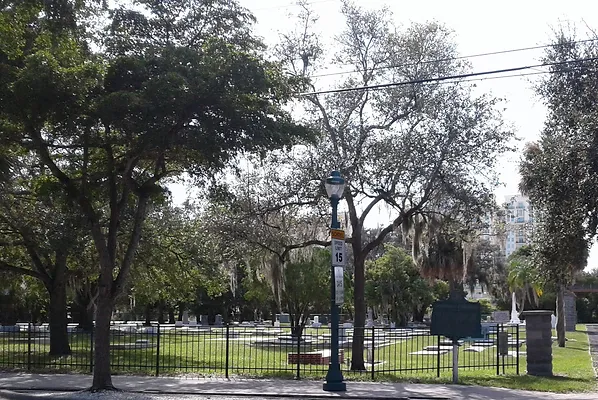The Historic Rosemary District
Most of what is now Rosemary District was Sarasota's first documented African-American community — known as Overtown until the 1990s. The southern boundary of Overtown is cited as either today's 4th Street or 5th Street; the other boundaries match Rosemary District's.
The name generally associated with the initial settlement of Overtown is Lewis Colson. This formerly enslaved man arrived in Sarasota in 1884 and, as assistant to engineer/surveyor Richard E. Paulson, drove the first stake in the ground in 1885 to plat the original town of Sarasota. In 1897, Colson helped establish Sarasota's first African-American church, Bethlehem Baptist Church, by selling a plot of land at Central Avenue and 7th Street to church trustees for one dollar. Construction of the church was completed in 1899 and the building used until 1973 when the congregation moved to its current location closer to Newtown. In 1910, Colson led a group of families to establish a community near their church.
By 1920, Overtown was a thriving community. Its population grew as African-Americans moved to Sarasota for jobs in the hotel and construction industries. Its business community grew to provide goods and services that were otherwise only available to white Sarasotans. Consequently, Overtown had a variety of single family homes, commercial buildings, churches, schools and social clubhouses — many built in the mid-1920s. Some of them still remain; the most notable are shown below.
Also included below are two historically-designated Rosemary District buildings in the area south of Overtown. In 2002, Overtown was listed on the National Register of Historic Places. A copy of the Nomination Form is here. A brochure of Overtown Treasures published by Newtown Alive is here.
Preserving the past. Shaping the Future.
The Rosemary District will be Sarasota’s 21st century, complete live/work/play neighborhood, strategically adjacent to traditional downtown, the Bayfront and established residential neighborhoods, but with its own distinct identity.
The neighborhood’s cultural and architectural history will be respected, while creativity, innovation and the arts are celebrated.
Public policies and investments; new developments and business; and events and activities that contribute to a vibrant, human scale neighborhood should be encouraged.
Safe and active street life, diversity, and authenticity should be promoted.
Historic Sites in the Rosemary District
-

851 Central Avenue Rosemary Cemetery built in 1886
-

1373–1385 5th Street Hood Building built 1925
-

513 Central Avenue formerly Payne Chapel AME Church built 1926
-

1419 5th Street formerly Ace Theater built 1925
-

501–513 Kumquat Court Appleby Building built 1925
-

800–830 Central Avenue Rosemary Court 1917, 1928 & 1936
-

308 Cocoanut Avenue Dr. Halton Residence built 1910
-

1225 Fruitville Road J. B. Turner House built 1912
-

1570 Boulevard of the Arts BOTA Center built 1957
-

1435 7th Street formerly Leonard Reid house built 1924
Relocated to Newtown to become Sarasota African American Cultural Coalition headquarters


